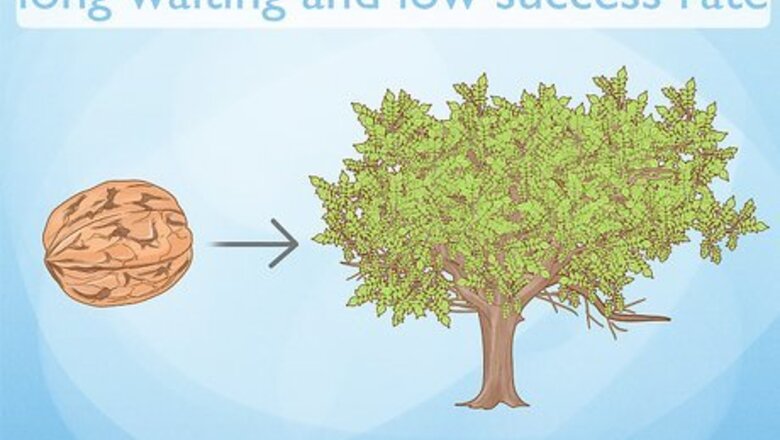
views
Preparing Walnuts for Planting
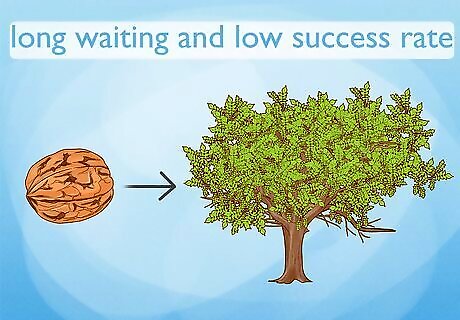
Understand the effort involved, and the risks to your garden. Preparing walnut seeds can take months of waiting, and success rate can be low. You may choose to purchase a seedling and skip to that section instead. Before using either method, be aware that walnut trees, especially of the black walnut species, release chemicals into the soil that kill many nearby plants, including pine trees, apple trees, tomatoes, and others. This, along with their massive size and sometimes aggressive spreading of new walnut plants, can make them unpopular in cities and suburbs.
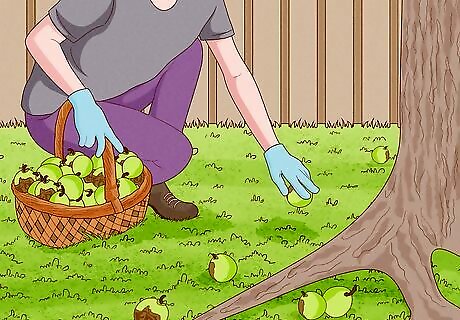
Collect fallen walnuts. In the autumn, gather nuts that have fallen from walnut trees, or gently hit walnut branches with a PVC pipe to cause ripe nuts to fall. Even when ripe and fallen, most nuts will still be encased in a thick green or brown husk around the nutshell. Warning: walnut husks can stain and irritate skin and clothing. Waterproof gloves are recommended.
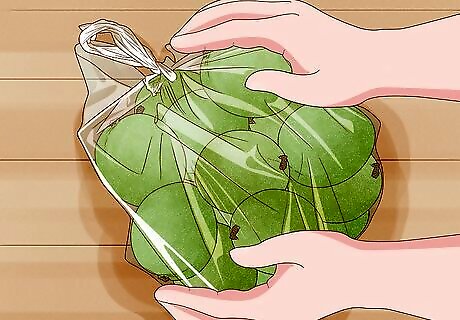
Purchase walnuts instead. If you plan to start a walnut orchard to produce nuts or timber, ask a local forester or look online for a species and variety specialized for your climate and your intended purpose. Ideally, purchase walnut seed from trees within 100 miles (160 km) of your planting location, as these may be better adapted. Walnuts typically grow in USDA hardiness zones 4—9, or areas with a -30 to +30ºF (-34 to -1ºC) minimum temperature, but some varieties are better suited to cold than others. Black walnut is highly expensive and in-demand for its timber, while English walnut (also called Persian walnut) is commonly grown for either nuts or timber. Many varieties of each exist, along with other, less widely available species. Walnuts from a grocery store are unlikely to have the moisture necessary to germinate. Even if they do, the nuts were likely produced by a hybrid tree or a tree variety suited for a different climate, making success in your area unlikely.
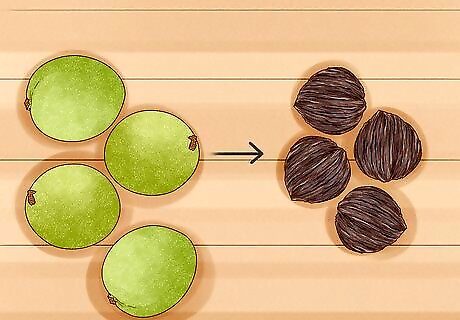
Remove the husks (optional). Walnuts can grow without the husks being removed, but many people remove the husks to check the walnuts inside are undamaged, and to make them easier to handle. To remove the husk, soak the walnuts in a bucket of water until the outer husk is soft to the touch, waiting up to three days for the hardest nuts. Crack and peel off the softened husk by hand. If the husks have dried out, they can be almost impossible to remove. Try driving over them in a car. For a larger quantity of walnuts, run them through a corn sheller, or even rotate them in a cement mixer with gravel and water for 30 minutes.
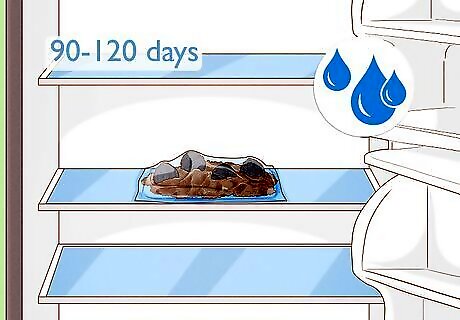
Keep the nuts moist over the winter, for 90–120 days. Walnuts, like many plant seeds, need to experience a moist, cold environment before the plant awakens from its dormancy and emerges from the shell. This takes 3–4 months for walnuts, depending on the variety, during which they should be kept moist. Keeping seeds in an environment for this purpose is called stratification, and for walnuts can be done in one of the following ways: Keep small amounts of walnuts in moist peat moss or moist sand, inside plastic bags kept in a refrigerator, or in another location between 34 and 41ºF (2–5ºC). For a large quantity of nuts, dig a pit in fast-draining soil, 1 to 2 feet (.3 to .6 meters) deep. Fill this pit by alternating single layers of nuts with 2 inch (5 cm) layers of sand, leaves, or mulch. Cover the pit with screening to keep out rodents.
Planting the Walnuts
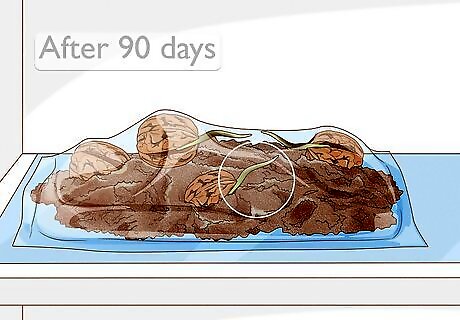
Remove sprouting seeds a week before sprouting, but keep them moist. After the ground has thawed, and at least 90 days have passed, remove the seeds from their cold environment. Viable seeds should have a small sprout emerging. Keep the seeds moist for a full week before planting.
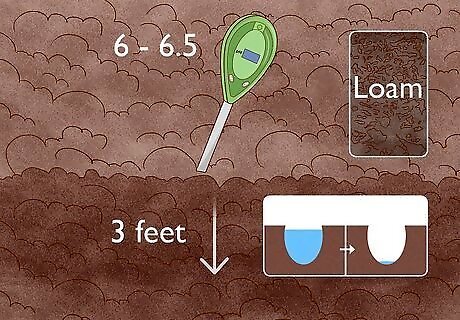
Select a planting site. All walnut species require high quality soil, and this step is especially important if you are starting a walnut orchard. Choose a location with well-draining, loamy soil at least three feet (0.9 m) deep. Avoid steep slopes, ridge tops, rocky soil, and soil with large amounts of clay. The lower areas of north-facing slopes are acceptable in rolling or mountainous terrain (or south-facing, if located in the Southern Hemisphere). Walnut is fairly versatile when it comes to soil pH. Soils between 6.0 and 6.5 pH may be best, but anything from 5 to 8 should be acceptable.
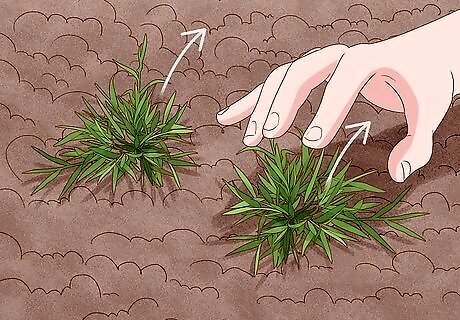
Clear the site. Remove existing vegetation from the planting site before planting, as they will compete for the same nutrients the walnut tree or trees need. For an orchard-sized planting, cultivating the field to aerate the soil is also recommended.
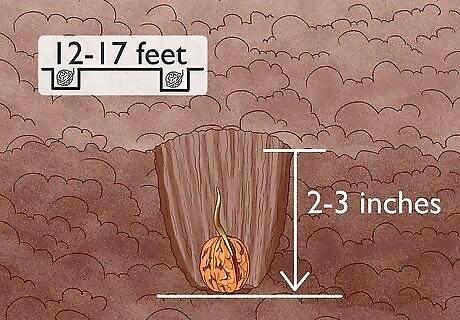
Plant the walnuts in small holes. Dig small holes, about 2–3 inches (5–7.5 cm) deep, and place the walnuts sideways at the bottom of these, then refill with dirt. When planting multiple trees, place the holes 12–17 feet (3.7—5.2m) apart, in a grid position. Optionally, you may plant two or more nuts in each spot, 8 inches (20 cm) from each other. Once the seedlings have grown for a year or two, remove all but the healthiest from each spot. See the tips section for an alternate planting method to protect against squirrels and other small animals.
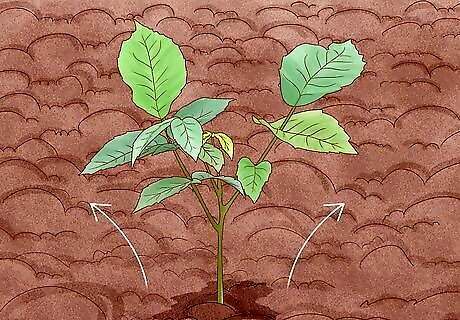
Care for the growing seedlings. The next section contains information on caring for seedlings and growing trees. Skip over the steps that involve planting trees from seedlings.
Planting and Caring for Walnut Trees
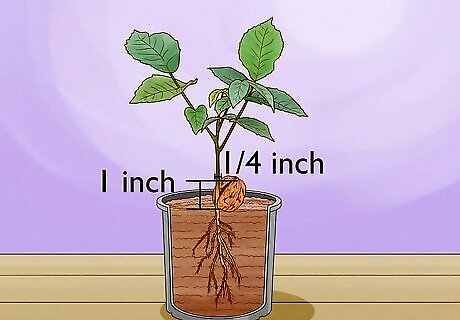
Select seedlings (if not growing from nuts). Measure the seedling's diameter 1 inch (2.5 cm) above the root collar, where the roots meet the trunk. Select seedlings with a minimum diameter here of 1/4 inch (0.64 cm), and preferably larger. This is the most important measurement for predicting quality. Bare-root seedlings, sold without any soil, should be planted in early spring, before bud growth, and should be planted immediately after acquiring. Containerized seedlings can handle later planting dates and drier soils, but are typically much more expensive.
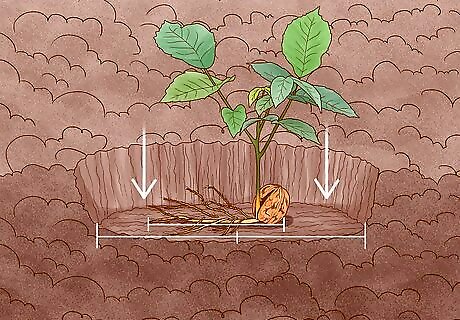
Plant the seedlings in the spring. Choose well-draining, loamy soil, avoiding steep slopes and hilltops. Place the seedlings in holes that are twice as wide in diameter as the seedling roots, and just deep enough to bury the roots. For best results, backfill with one part compost for every three parts normal soil. Tamp down the soil and water thoroughly. Plant the seedlings 12–17 feet (3.7—5.2m) to get the most nuts from your trees. Keeping seedlings 10–12 ft (3.0–3.7 m) apart is best for timber production.
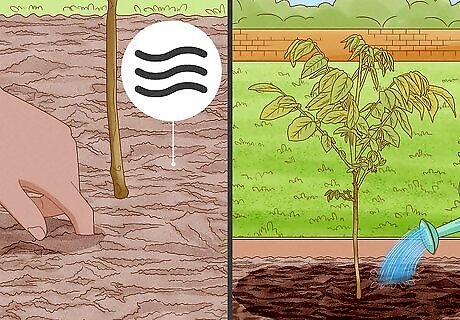
Water occasionally. For at least the first two years after planting, whether grown from nut or seed, the walnut tree needs supplemental watering, especially during dry or warm weather. Weekly waterings are best for newly planted trees, but you can water less as the tree grows. Give the plant a thorough watering, but do not water again until the soil has mostly dried. Frequent watering can harm the plant. After two or three years, the trees only need to be watered during the hottest time of year or during a drought, about one to three times a month.
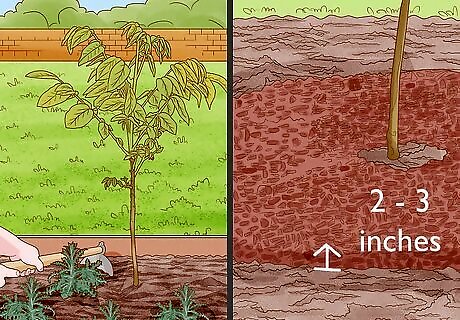
Deal with weeds. Care for seedlings by keeping the area around them free of sod and weeds, which will compete with the growth of small seedlings. Remove sod and weeds by hand or by laying fabric weed barrier. Larger seedlings can be treated with mulch to keep weeds at bay, using about 2 or 3 inches over the root zones. Do not use mulch on plants that have not yet emerged from the soil, as it can block the sprout from growing. Wait until the seedling is woody and has developed roots.
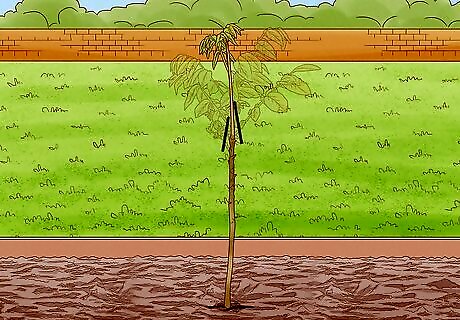
Learn about pruning walnuts. If you are raising the walnut for timber, it is important to prune early to ensure a straight trunk, leaving one "leader" branch at the top of the tree and guiding it straight and upright over the next one or two growing seasons. Saplings grown for nuts can be left alone until after thinning, but subsequent pruning is wise for black walnut trees, as these are usually sold for timber eventually, even nut varieties. If you have not pruned trees before, especially saplings, finding an experienced pruner to help you identify leaders and important branches is recommended. If the top of the tree is forked, bend the best leader upright and tape it to other branches as support, then cut off the tip of the supporting branches to prevent growth.
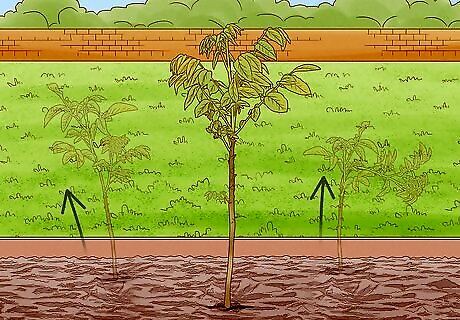
Thin the stand of trees to select the best examples. Most orchards begin with more plants than the area can support. Once the trees are large enough that the branches are beginning to run into each other, select the healthiest trees that display the characteristics you value, typically a straight trunk and rapid growth. Remove the rest, but avoid clearing too much space that can cause weeds or even competing trees to grow.
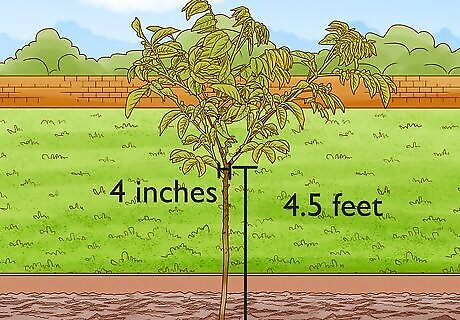
Use fertilizer once the tree has grown past sapling size. Fertilization is somewhat controversial, at least for black walnuts, because it can assist competing weeds more than the tree if the soil is already rich in nutrients. Wait until the trunk is "pole" size, or at least 4 inches (10 cm) in diameter measured 4.5 feet (1.4 m) above the ground. Ideally, send soil or leaves to a forestry laboratory to identify exact nutrient deficiencies. If this is not possible, apply fertilizer containing 3 lbs nitrogen, 5 lbs triple super phosphate, and 8 lbs muriate of potash to each tree in late spring. Leave a few trees unfertilized to compare the effect, and, if positive, reapply every 3–5 years. Test soil pH after fertilizing to see if you need to adjust it back to normal levels.
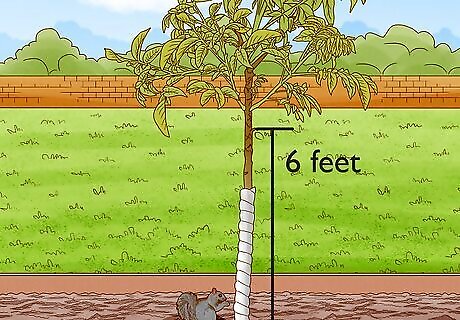
Control pests. Squirrels are a common sight in walnut groves, and can take an entire crop of nuts if not controlled. Cover the trunks with plastic tree guard to keep them from climbing them, and prune away branches less than 6 ft. (1.8 m) from the ground if you are able to do so without causing knots that diminish timber value. Other pests such as caterpillars, aphids, and flies vary by region, and may not harm your tree if they are active late in the growing season. Consult a nearby forester or experienced walnut grower for information specific to your region. Keep livestock away from walnut trees of any size, as the damage they cause may even make the timber value of adult trees worthless.


















Comments
0 comment